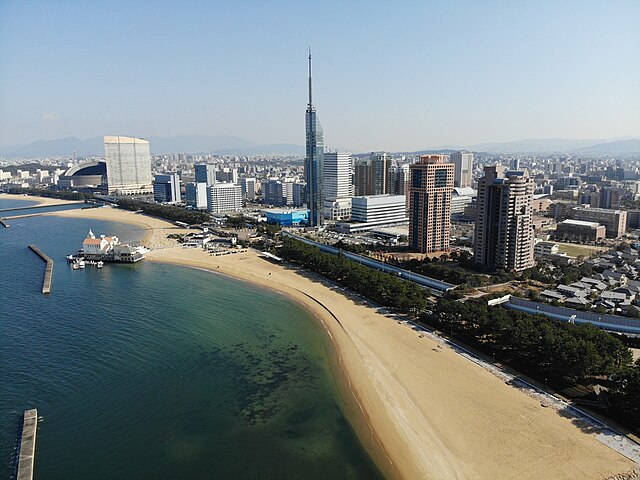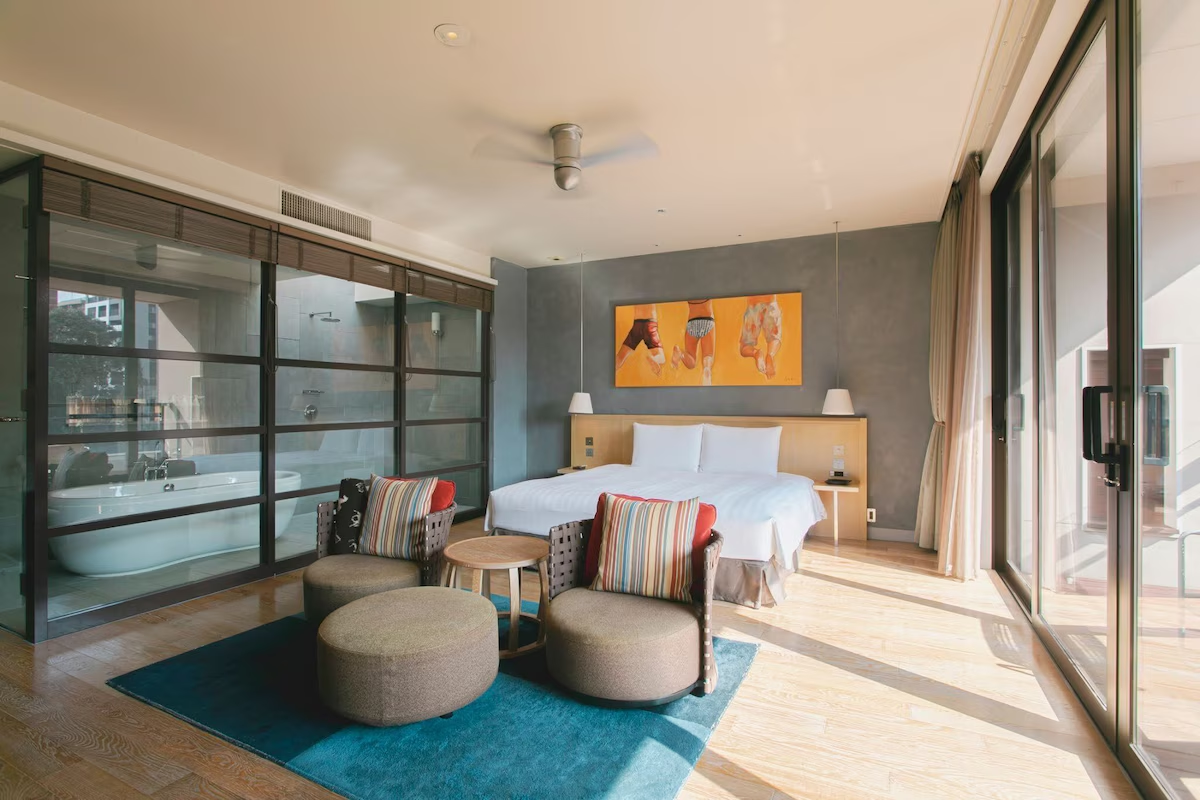Fukuoka Prefecture
Where is Fukuoka?
Fukuoka Prefecture is situated in the north of Kyushu, the southernmost of Japan’s four main islands.
It borders Saga Prefecture to the west, Oita Prefecture to the east, and Kumamoto Prefecture to the south.
The Kanmon Straits (or Straits of Shimonoseki) separate Fukuoka Prefecture from Yamaguchi Prefecture to the north.


The prefectural capital is Fukuoka City, the second largest by size but most populous city in the prefecture. The largest city by size is Kitakyushu which sits directly opposite Shimonoseki across the Kanmon Straits.
What is Fukuoka known for?
Fukuoka City was created in 1889 when the merchant town of Hakata was merged with the feudal domain of Fukuoka. The main port and train station in the city still bear the name Hakata as do many things originating from the area.

Tonkotsu ramen, which features a broth made from boiled pork bones, is a local specialty and throughout Japan many of restaurants that serve the dish call it Hakata style ramen due to its origins in Fukuoka.

Due to its proximity to China and Korea, the area has a number of historic Buddhist temples such as Tocho-ji and Joten-ji which were established by monks upon their return to Japan after studying abroad.


Where should I visit in Fukuoka?
As the prefectural capital, Fukuoka City is host to many museums covering topics as diverse as Asian Art, Folk History, Science and Ramen.
The city also plays host to several major festivals throughout the year. These include the Hakata Dontaku Festival which attracts over 2 million people to the city and the Hakata Gion Yamakasa festival which features 5m tall floats carried by hand and raced through the city streets.


Dazaifu, a town within the Fukuoka City municipal area, is the former capital of Kyushu and is the location of the Dazaifu Tenmangu Shrine, a large historic shrine complex popular with visitors.


Dazaifu is also home to the Kyushu National Museum, one of only four national museums in the country, which host a large number of displays on the history of Japan, Kyushu and Asia.
Kitakyushu City is a product of the merger of five smaller cities which still have their own distinctive character, the most prominent of which are Kokura and Moji.


Kokura contains the main transport, nightlife and shopping areas in Kitakyushu as well as Kokura Castle.
Moji contains a large number of late 19th century and early 20th century buildings which were often constructed in a western style as well as great views across the Kanmon Straits.
When is the best time to visit Fukuoka?
Fukuoka Prefecture has a humid subtropical climate, making it a great destination to visit year-round.
Spring (March to May) features mild temperatures and occasional rain showers. The local cherry blossom season usually starts in April each year.

Summer (June to August) sees hot temperatures that peak in July and August as well as high humidity and rain. The prefecture experiences a rainy season in June and July and may be affected by typhoons during that time.
Autumn (September to November) brings lower, more comfortable temperatures as the autumn foliage begins to change color.
Winter (December to March) is typically mild with temperatures around 8°C (46°F) and visitors are more likely to encounter light rain showers than snow.
Due to its climate, Fukuoka receives a significant amount of rainfall throughout the year, so whatever time you visit, it’s always a good idea to carry an umbrella.
All Events in Fukuoka
Tours and Activities in Fukuoka
None found.
Where should I stay in Fukuoka?
Choosing where to stay in Fukuoka prefecture will depend on where your itinerary is taking you, as well as your budget.
Fukuoka City and Kitakyushu have the largest selections of hotels in the prefecture so visitors on a budget are recommended to look for accommodation in those cities.
Both cities have a wide selection of budget hotels including those operated by national budget hotel chains such as Hotel Livemax Hakata-ekimae or Toyoko Inn Kokura Station Minami.


As the sixth largest city in Japan, Fukuoka City also has a selection of luxury hotels such as the 5 star Ritz-Carlton or the modern With The Style Fukuoka.


How do I get to Fukuoka Prefecture?
Fukuoka Prefecture can be easily reached by train, air or ferry. The best method will depend on where you are travelling from.
The San’yo Shinkansen departs Shin-Osaka Station multiple times each day, passes through Kitakyushu and terminates at Hakata Station in Fukuoka City.
Visitors arriving from Tokyo can take the Tokaido Shinkansen from Tokyo Station to Shin-Osaka. Depending on their train, they may have to transfer to the San’yo Shinkansen but many trains on the Tokaido route continue on the San’yo route and terminate in Hakata.
The Kyushu Shinkansen connects Kagoshima and Kumamoto to Fukuoka while the Nishi Kyushu Shinkansen does the same for Nagasaki.

Both Fukuoka City and Kitakyushu have their own airport.
Fukuoka Airport has a number of domestic flights arriving from and departing to major Japanese cities including Tokyo, Osaka and Nagoya on a daily basis.
International flights are also available to/from locations in China, South Korea, Taiwan and South East Asia.
Fukuoka Airport is directly connected to the city and Hakata Station by the Fukuoka Subway.
Flights between Fukuoka and Tokyo are significantly quicker than the Shinkansen, with flights taking 2 hours compared to 5 hours on the fastest Shinkansen train service available.

Kitakyushu Airport offers regular domestic flights to Tokyo’s Haneda Airport and Nagoya’s Komaki Airport. Several flights per week also operate to/from Kaohsiung in Taiwan.
While not directly accessible by train, Kitakyushu Airport is served by regular buses that connect it to Kokura Station in the city center.
Fukuoka Prefecture can also be accessed via ferry services from Busan, South Korea and Osaka.

The JR Kyushu Ferry is a fast electric ferry that makes one return trip between Fukuoka and Busan each day, each trip taking 3.5 hours. The Camellia Line ferry is an overnight ferry that takes 8 hours to travel between Fukuoka and Busan.
The Meimon Taiyo Ferry travels between Osaka and Kitakyushu with 2 sailings per day from each port.
No tags for this post.